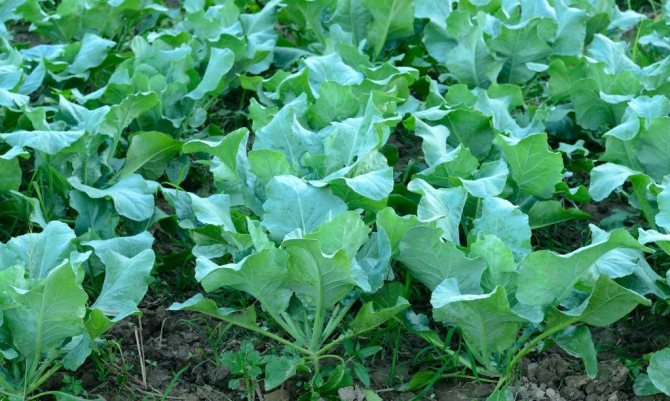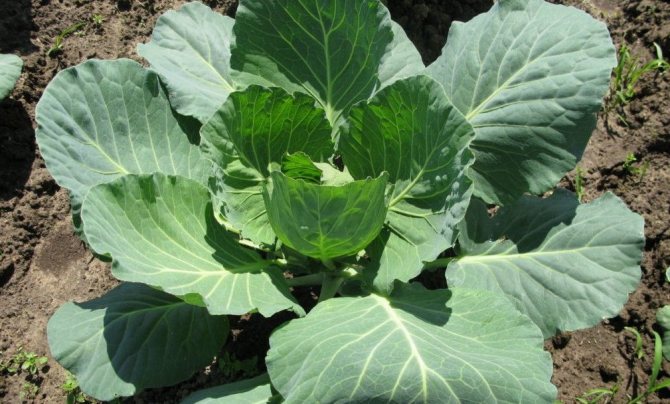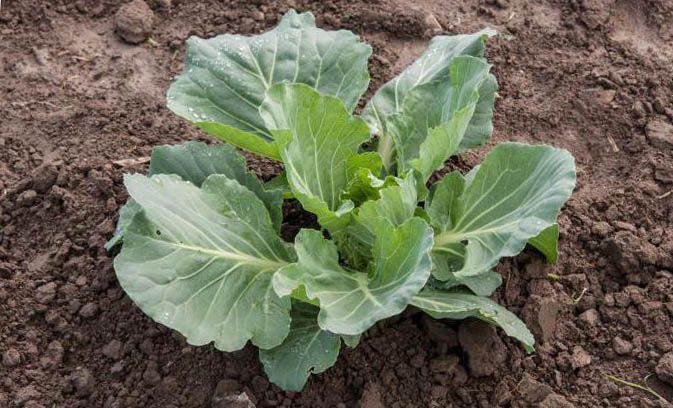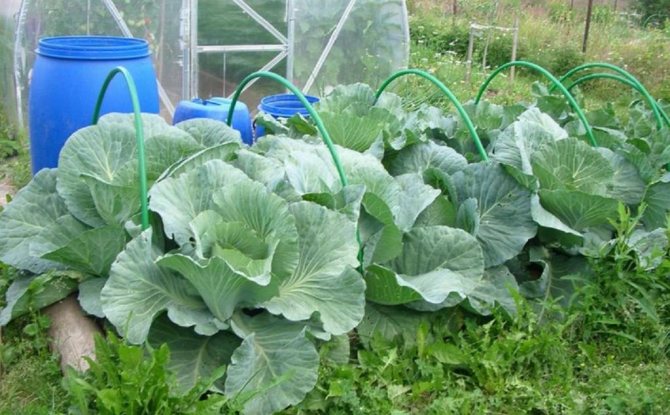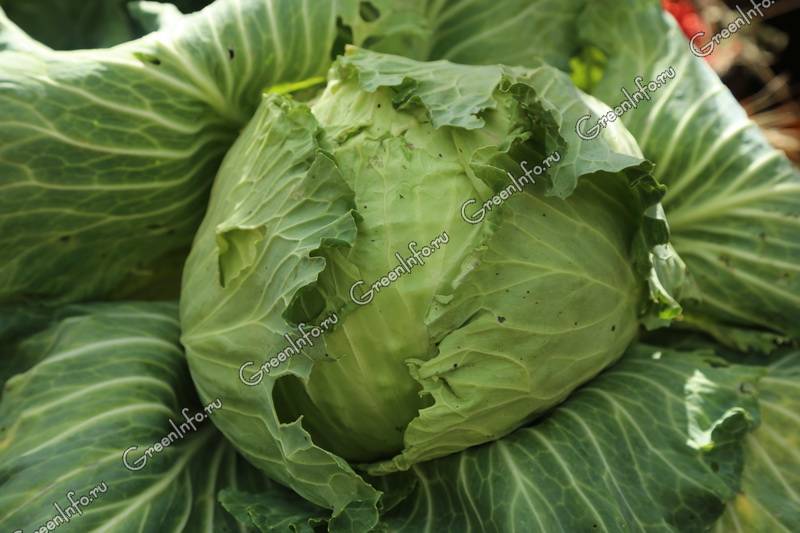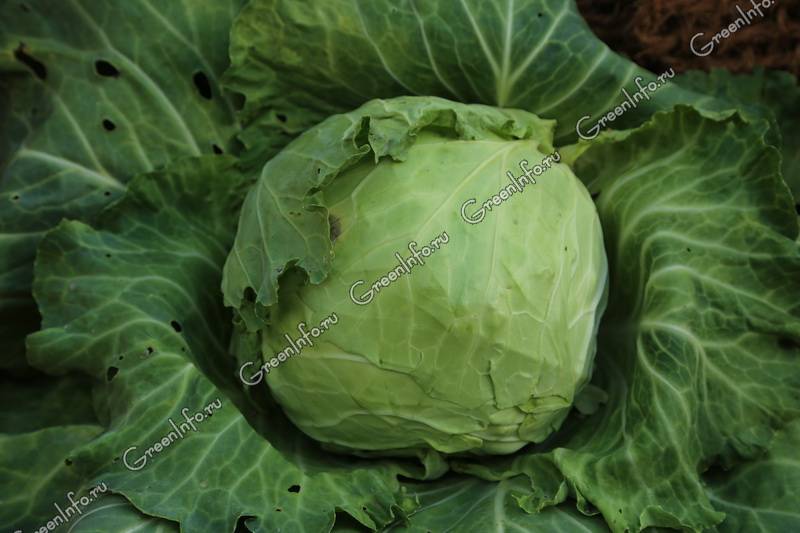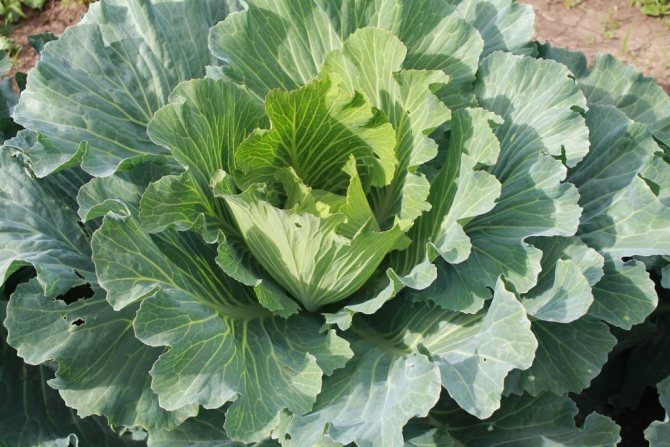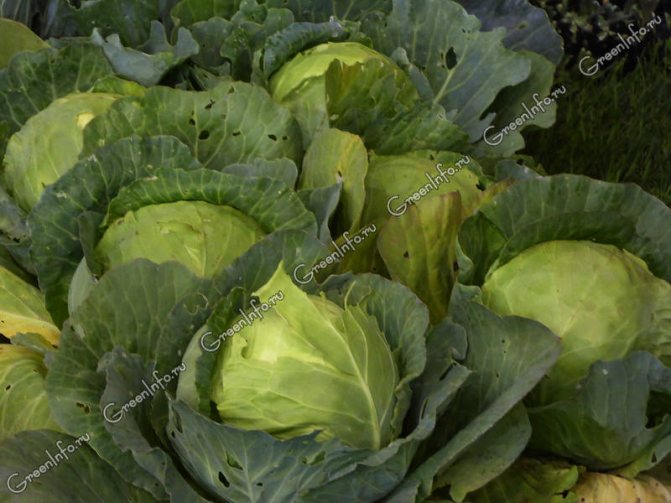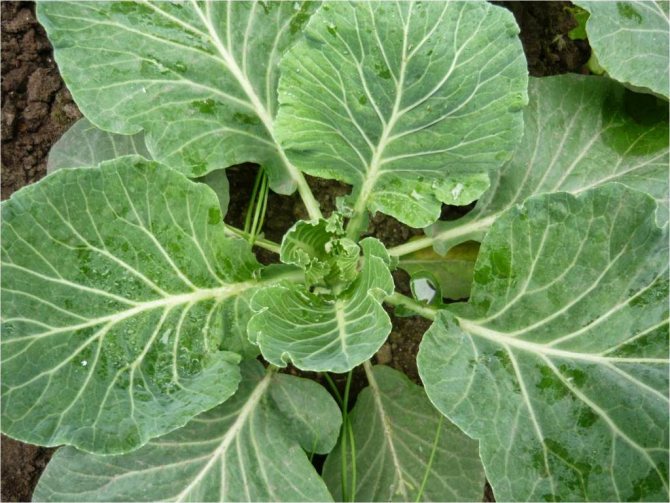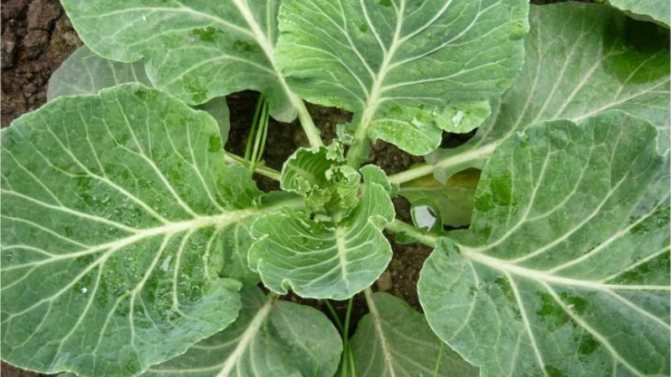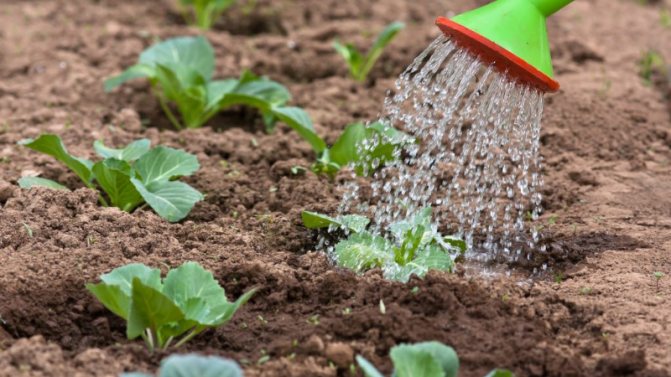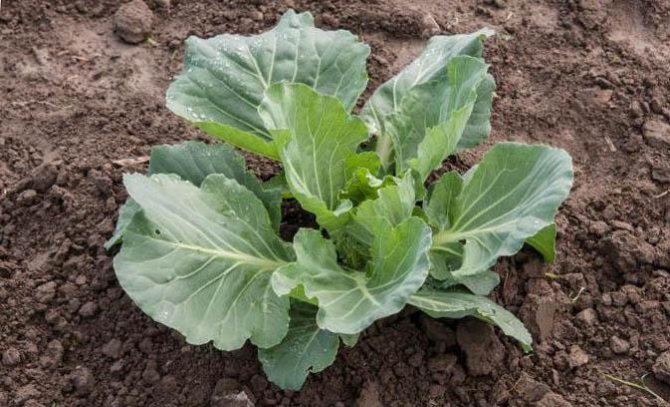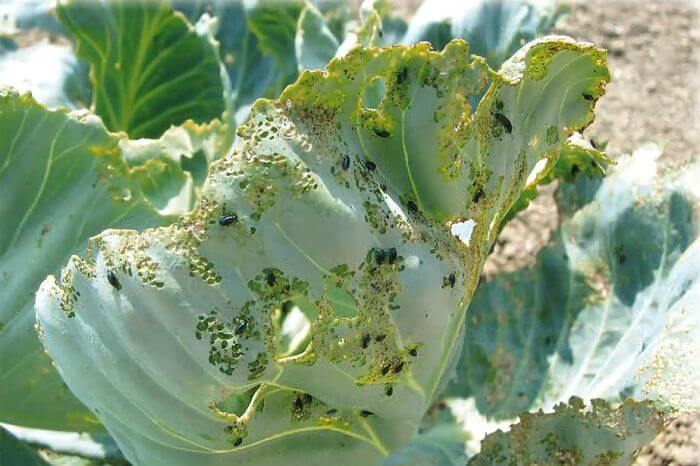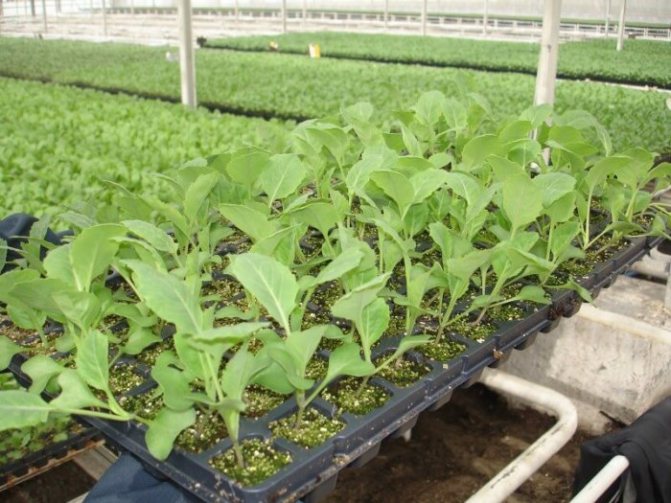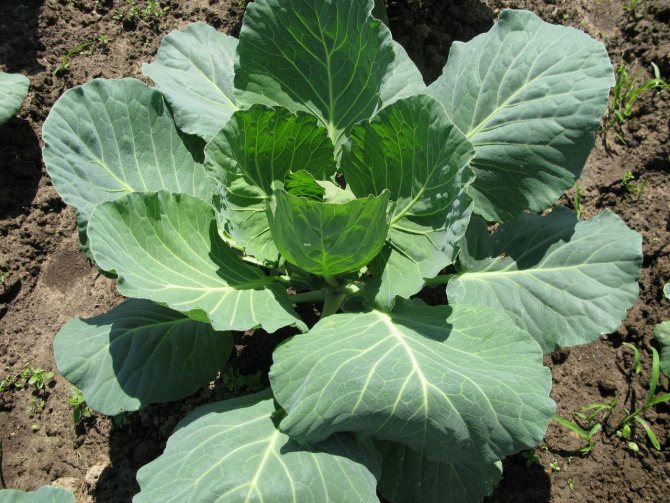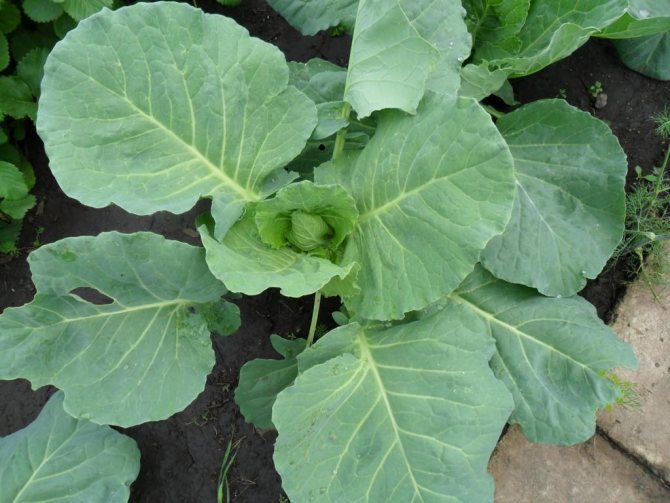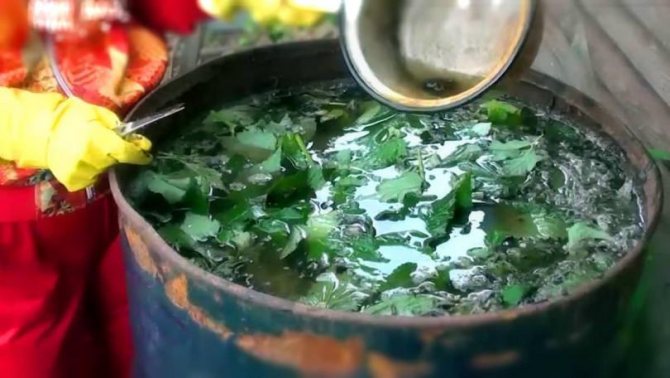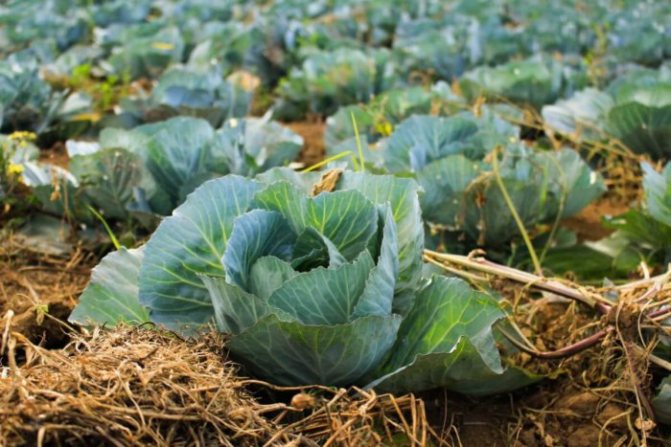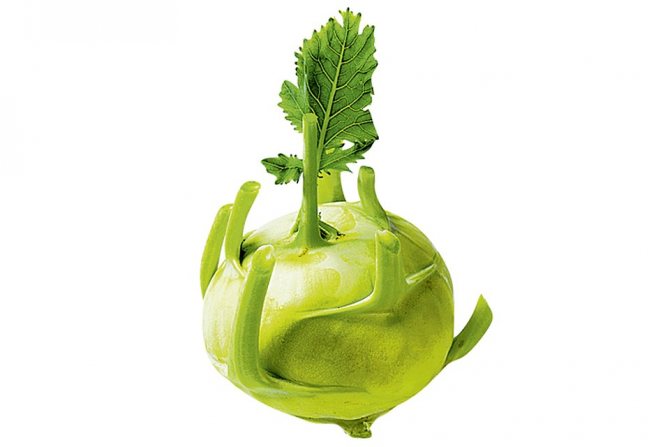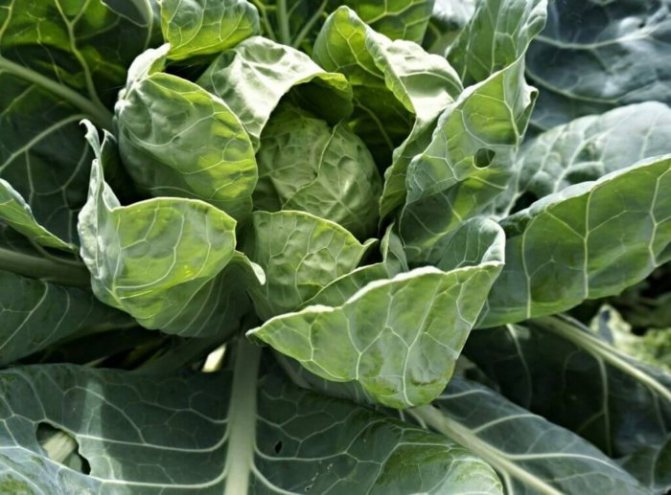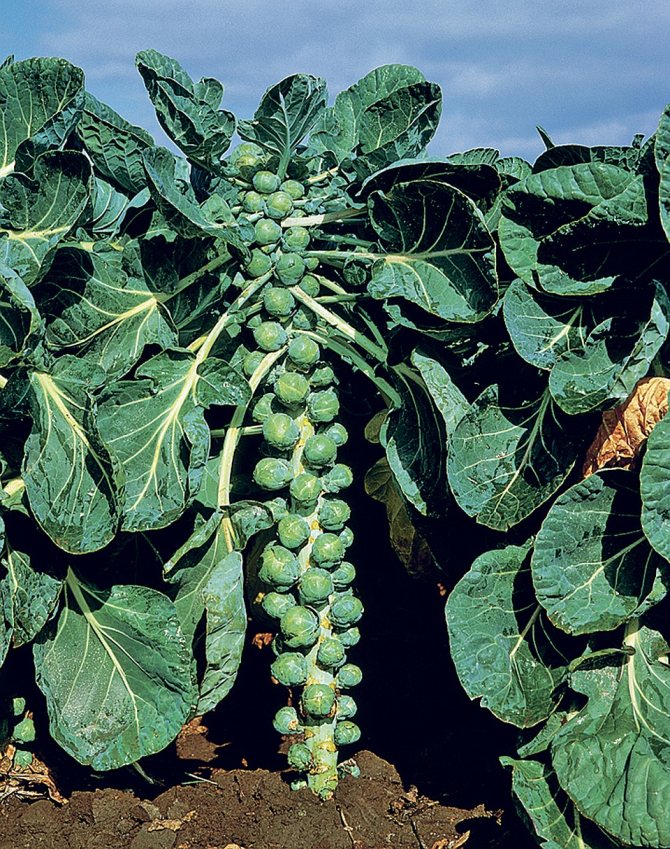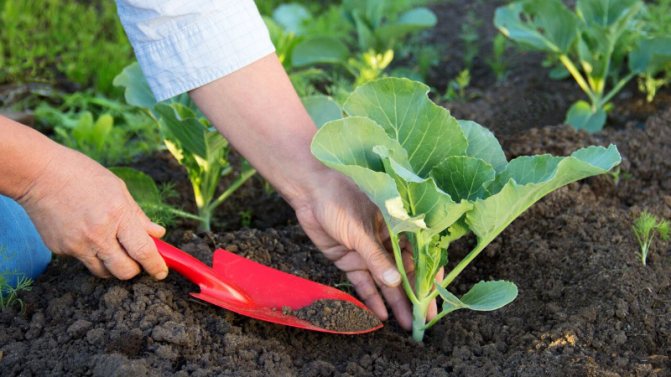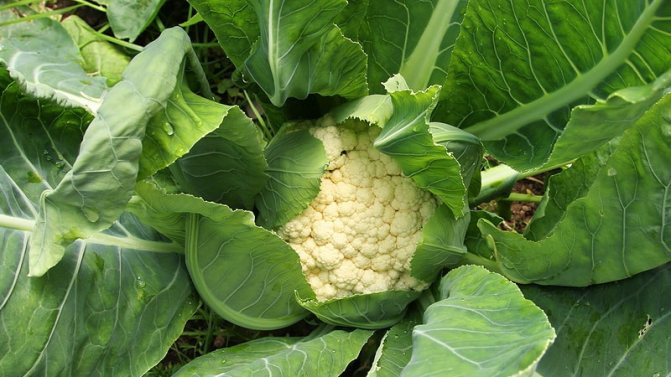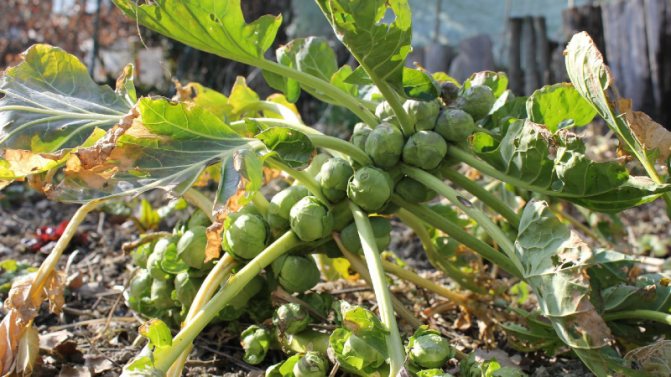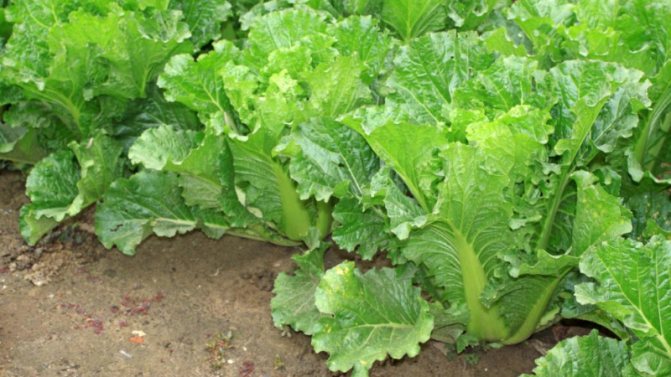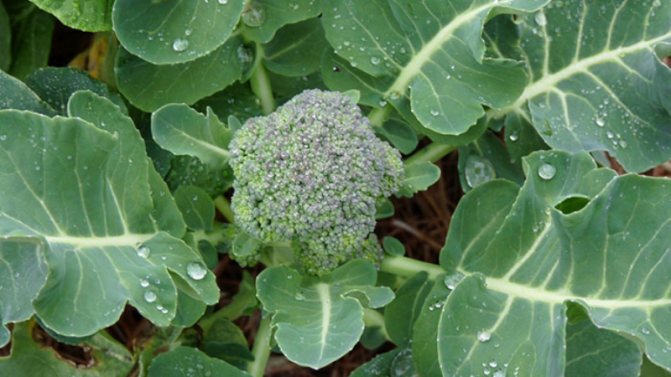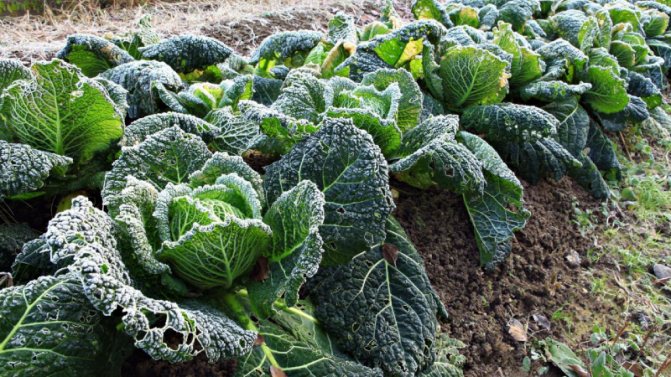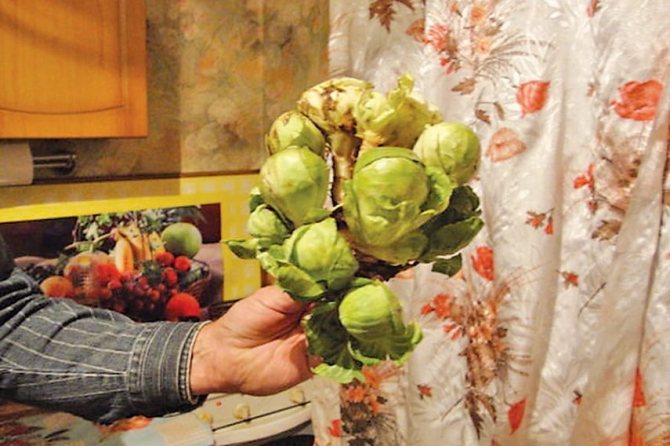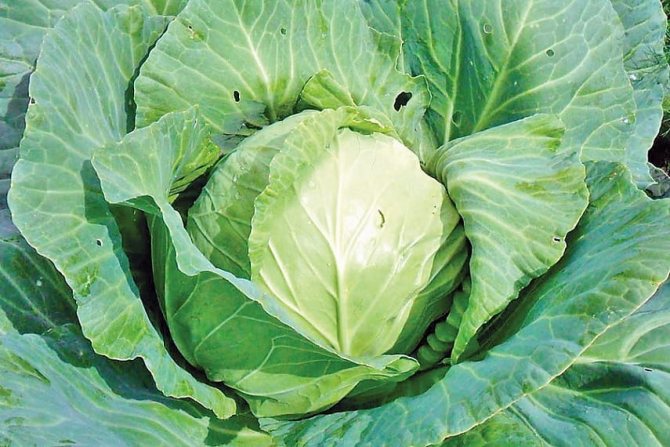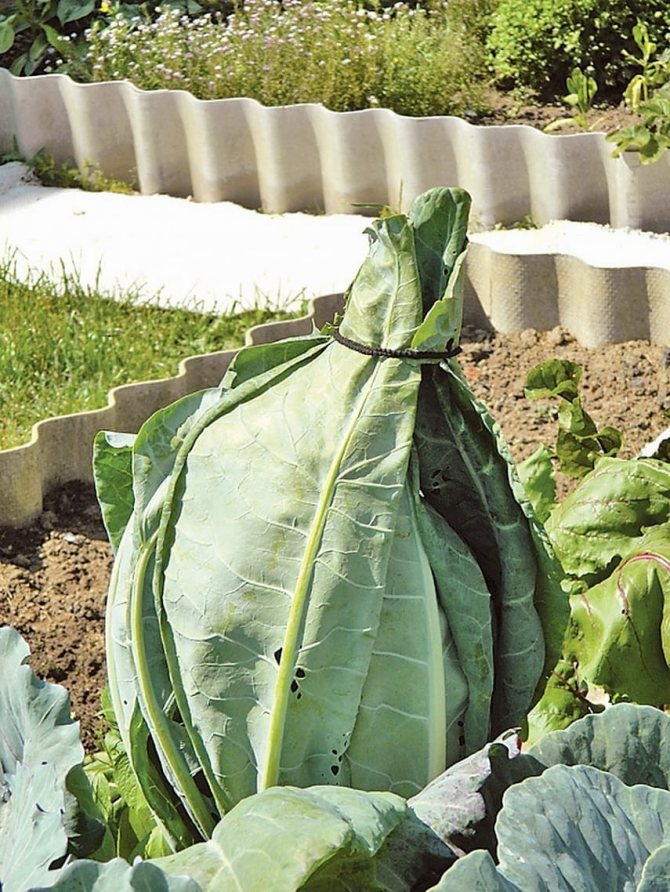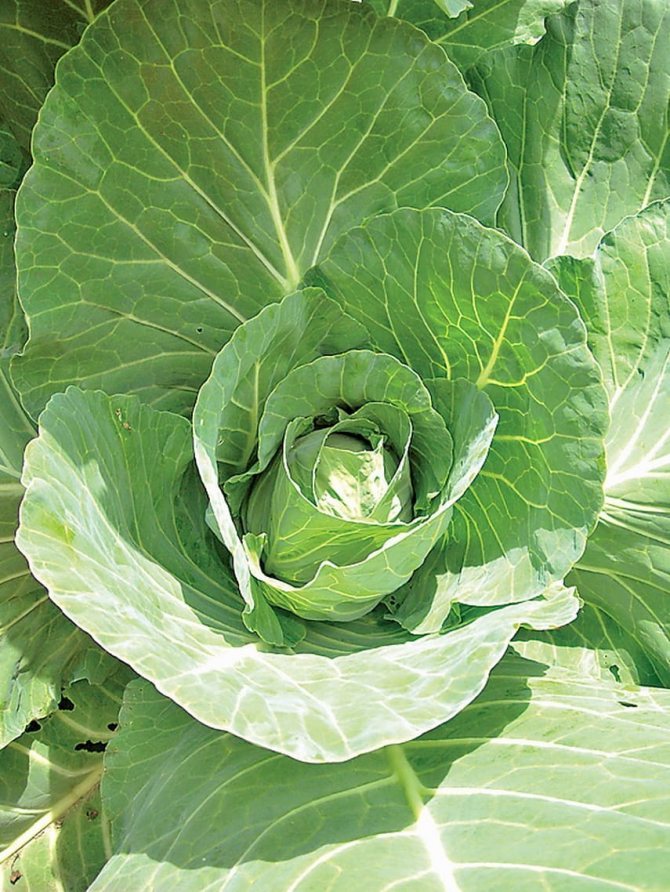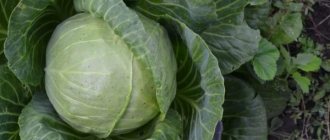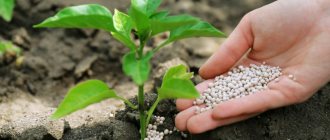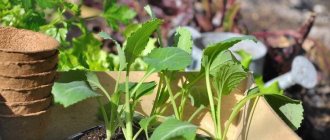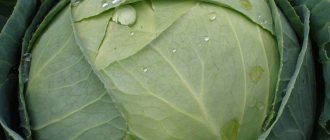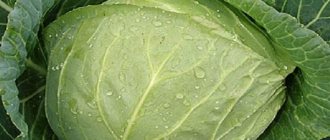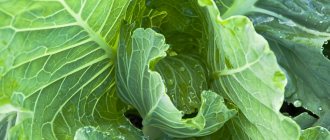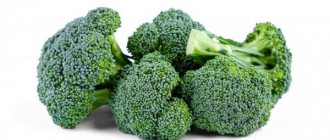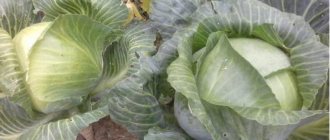Very often vegetable growers ask: why cabbage does not have heads of cabbage tied? There can be several main reasons for this phenomenon. After all, cabbage for the successful setting of heads of cabbage requires certain nutrition and growing conditions in the beds. If even one of these factors is not observed, it will not work to achieve a good harvest of this vegetable.
And, of course, the correct preliminary actions before starting the very process of growing cabbage in the open field in a summer cottage: do not forget about the choice of high-quality seeds from well-known agricultural firms. They should be purchased only in trusted stores or specialized shopping centers.
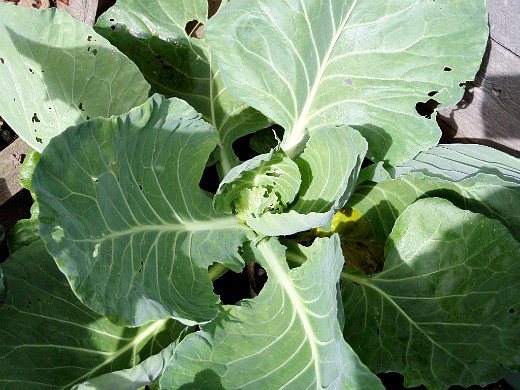
Why does cabbage tie badly outdoors?


Growing cabbage requires a lot of effort from gardeners. Each of them hopes to reap a good harvest in the fall so that they can receive vitamins until next spring. However, things don't always go smoothly. It happens that the cabbage is not tied into a head of cabbage, but gives only leaves. Having discovered the absence of ovaries, you can try to correct the situation, but first you need to find out why the problem arose.
Common causes of lack of ovaries
When all the rules of agricultural technology are followed, cabbage develops well, forming dense heads. This culture is demanding on the composition of the soil, lighting and temperature conditions, so any mistakes of the gardener associated with caring for it can lead to a halt in the growing season.
Poor quality seeds
When buying planting material, you need to pay attention not to the bright picture on the package, but to the reputation of the manufacturer. The quality of the seeds depends on how quickly they will sprout, whether the seedlings will be healthy, whether the heads of cabbage will be tied up. The shelf life is also important. If it comes to an end, such material is not suitable for sowing.
Attention! When choosing seeds, preference is given to a variety suitable for a particular area. In different regions, the same hybrid will behave differently.
Violation of sowing dates
The sowing time depends on the type of cabbage. For the heads of cabbage to set, they need a certain temperature, which is why it is important to adhere to the sowing dates. Early hybrids are sown for seedlings in February-March, mid-ripening ones - in early April, and late ones - in the last decade of this month.
Wrong choice of landing site
Cabbage does not form heads of cabbage if the crop grows in the shade. The plant loves open, sunny places. Another reason for the absence of ovaries is a violation of the seedling planting scheme, the thickening of the beds. The plant needs enough nutrients. If the bushes are too close together, there is not enough food for everyone.
Unsuitable soil composition
Cabbage does not grow well on acidic soils. In such conditions, plants wither, they are more susceptible to the development of diseases caused by fungi and bacteria. In autumn, during digging, gardeners recommend liming the soil. When planting seedlings in the spring, 2 handfuls of wood ash are poured into each hole.
Soil for cabbage
Lack of nutrients
The head of cabbage is poorly formed if the plants lack trace elements. Lack of dressings or their incorrect introduction leads to the fact that the ovaries are not formed.During the growth of leaves, the culture needs an increased dose of nitrogenous substances, and when the forks curl, it is fed with phosphorus and potassium.
Weather
Cabbage heads curl poorly when hot. This plant loves to be cool. The heads are formed at a temperature of + 18 ... + 20 degrees. The vegetation process slows down when the thermometer rises to +25 degrees, and in extreme heat it stops altogether.
Errors in agricultural technology
You can get a good harvest of cabbage only if the crop is properly cared for. What you need to do regularly:
- loosen the soil under the bushes for better aeration of the root system;
- weed the beds, not allowing the weeds to take away nutrients from the cabbage;
- water the plants, preventing the soil from drying out, especially during the period of ovary formation.
Attention! Lack of moisture is one of the main reasons why cabbage does not curl into forks.
Diseases and pests
The invasion of insects on cabbage beds is a serious danger. Pests feed on cabbage juice and leaves, depriving plants of strength and endangering infections. The plant must be healthy to form forks. Weakened bushes are unlikely to bear fruit. It is important to inspect cabbage beds regularly. When pests are found, they begin to fight them immediately.
Tips & Tricks
Experienced gardeners know a lot of tricks that contribute to the normal development of plants and the formation of heads of cabbage, so they can help save the harvest.
- In specialized stores, drugs are sold that saturate the soil with the elements necessary to stimulate the formation of ovaries. The most effective of them are the means "Ovyaz" and "Mikrass", which must be used in accordance with the instructions.
- Some gardeners cut off the lower leaves from cabbage - it is believed that this contributes to the formation of heads of cabbage. The effectiveness of this procedure has not been scientifically proven, but sometimes it does help. In this case, it is important not to overdo it - do not cut off more than 3-5 leaves, otherwise the cabbage will lose the nutrients they contain.
- If the heads of cabbage do not form due to bad weather, simple recipes can be used. The cabbage is sprayed twice: for the first, they mix a teaspoon of magnesium and boron with a tablespoon of crystallin and dissolve the mixture in 10 liters of water. For the second, you should take 0.5 liters of milk, 10 g of boron, a tablespoon of magnesium sulfate, 2 tablespoons of superphosphate and a few drops of iodine - the nutrients also need to be dissolved in 10 liters of water. (Galina Ovseeva, "Dacha Councils").
- A simple and cheap way to speed up the formation of ovaries is to tie the leaves into a bud gently and not too tightly in hot weather, and then water the plantings regularly.
Do you always have a good harvest of cabbage in your garden?
Of course, not always
No ovaries on cabbage: how to solve the problem?
From planting seeds to harvesting, cabbage needs good care. The gardener must follow the rules of agricultural technology, fight pests and strengthen the immunity of plants with top dressing, then the forks will certainly tie up.
Compliance with the terms and rules of planting culture
Sowing cabbage seeds is done at a certain period. The planting time must not be violated, otherwise the time when the forks are usually tied will shift, the weather conditions will not be suitable for the formation of heads of cabbage.
Gardeners should adhere to the following guidelines when planting cabbage:
- disinfect seeds and soil before sowing;
- maintain the correct temperature regime for seedlings;
- plant cabbage in neutral or alkaline soil;
- follow the rules of crop rotation;
- do not allow the beds to thicken.
Elimination of errors in agricultural technology
To stimulate the formation of cabbage heads in the open field, you will have to adjust the watering. In dry weather, the soil in the beds is moistened every 2-3 days. With a thermometer reading + 20 ... + 23 degrees - after 4 days. Watering is reduced in September.
Boric acid as fertilizer for cabbage
There are three main types of fertilizers: potash; phosphoric; nitrogen. Nitrogen, phosphorus and potassium are the most important nutrients for all types of cabbage, and experimental tests in agricultural universities (on a comparative analysis) show that the need for these elements is approximately the same (an excess of nitrogen reduces the yield of early production by 15-20%).
Pepper seedlings do not grow, stands still, what to do?
If the seedlings of cucumbers are very elongated, what to do?
Planting peas in spring sowing: when to sow, how to plant correctly?
The latter species is well diluted with water and is used to fertilize cabbage in the spring, when the greens are just beginning to grow, since it contributes to the qualitative development of the root system of vegetable crops.
And the first two are used when the head of cabbage is already beginning to form. They help cabbage to be more resistant to diseases and to endure adverse weather more easily. Sulfur and iron are also included in the list of useful minerals for cabbage, as they contribute to the accumulation of proteins and prolong the life of the plant.
Slurry consists of the manure itself, water, ash and superphosphate. All this is mixed and infused under the film for two weeks, stirring it periodically. As a rule, this slurry is made in a barrel. Then it needs to be filled 1/3 with manure and completely filled with water. For 10 liters you need 50 g of superphosphate and for 1000 liters - 1 kilogram of ash.
It is necessary to introduce such a slurry two weeks after planting the bushes in the soil with the calculation of half a liter per one bush. Before using the slurry, it must be diluted with clean water. This must be done! Since undiluted slurry will kill the plant. After two weeks, feeding should be repeated.
Wood ash is full of many useful substances that are important for the accurate and high-quality formation of the cabbage bush. It can be used not only dry, but also in liquid form. Dry ash is mixed with the soil like any other fertilizer during soil cultivation. It can also be applied under each bush.
Important! In order not to harm the plant, it is necessary to dilute the ash correctly. One glass of ash is enough for 10 liters of water.
Another feature of ash is its ability to protect the plant from various pests. To do this, it is enough to sprinkle ash on the bush.
Promotes oxygen metabolism, increasing the amount of chlorophyll in the leaves. Also, foliar treatment with boric acid solution helps prevent the development of certain fungal diseases. For its preparation, take 1 tsp. boric acid crystals and dissolved in a glass of boiling water, and then diluted in 10 liters of water.
It is a source of potassium. When feeding, use a banana peel, laid in the holes before planting, or an infusion of dried peel. Prepare it by pouring 1 banana peel with 1 liter of water and insisting for three days. After that, strain and water the cabbage under the root.
Reasons for stopping the vegetation of a vegetable
There may be several factors by which cabbage does not develop. Most often, ovaries are not formed under unacceptable weather conditions or in violation of the rules of care.
Another reason for poor development is defective seedlings or seed. Weak seedlings grown in poor soil rarely form forks. Also, seeds with a large number of culled specimens or those that have given painful shoots should be alerted.
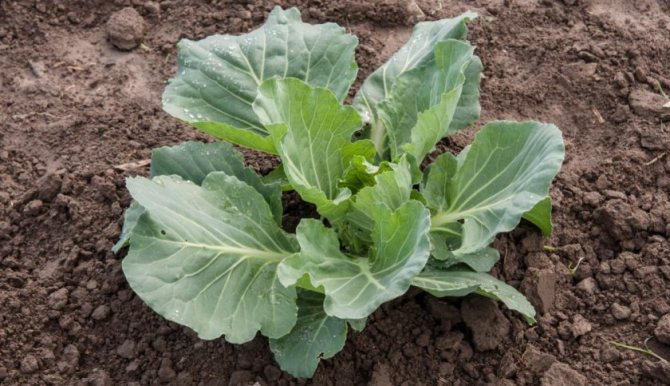

There are other reasons that are bad for the development of cabbage:
- Too little light... The culture loves the sun and a well-ventilated area.In a shaded area, seedlings will produce sprawling greens of a dark green color. Light is especially important for late varieties, since the daylight hours at the stage of heading are already too short.
- High acidity... The soil acidity optimum for the culture is 6.5–7.5 units.
- Density of plantings... Lack of air provokes the beginning of the struggle for life by plants. In this case, they will not tie the forks, but will release a large amount of greenery that is unsuitable for food.
- Micronutrient deficiency... For tying cabbage, you need a sufficient amount of nitrogen and potassium, so you need to follow the feeding regime and the rules of crop rotation. Fertilizers are especially relevant during the rooting period of seedlings and at the first stage of growth.
- Lack of moisture... Cabbage will not form forks due to insufficient watering. As a result, the seedling does not have enough nutrition, and instead of a head of cabbage, it releases a flower arrow.
- Heavy soil... If the soil is not loosened, this can lead to a lack of oxygen in the root system.
- Pests and diseases... Damaging the plant, they weaken it so much that the cabbage is unable to tie the forks.
Folk remedies
Among the folk remedies that contribute to the formation of cabbage heads, the most popular are organic matter (mullein, bird droppings), herbal infusions, yeast and boric acid. They contain nutrients that promote the growth of bushes and stimulate vegetation.
| Ovary stimulator | How to use |
| Cow dung | Dissolve part of the manure in 5 parts of water, water the cabbage two weeks after planting the seedlings in the ground, and immediately spud the bed |
| Nettle infusion | Cut off adult nettle bushes, place in a suitable container, cover with water and leave in the sun to ferment. Dilute half a glass of the resulting mass in 10 liters of water and water the beds |
| Yeast | Dilute any yeast in the amount of 100 g in 10 liters, leave for several days to make a mash. Dissolve 250 g of mash in 10 liters of water, pour over the cabbage |
| Boric acid | Take 1 teaspoon of boric acid, dissolve in a liter of hot water, add 9 liters of cold water and spray the plants |
Growing cabbage is a simple process, but the normal development and formation of strong heads of cabbage requires compliance with the rules of agricultural technology. Usually, regular watering, top dressing and loosening of the soil is enough to get a good harvest.
What to do if the cabbage does not tie into the head of cabbage, how to feed or water
Speaking about feeding cabbage, it should be remembered that this culture loves neutral and slightly alkaline soil, therefore, you should initially achieve optimal acidity.
Top dressing with manure
Such a procedure is performed depending on the variety of the vegetable (white cabbage early, mid-season or late).
It is good to make organic fertilizing in the fall, when digging. The plowing should be thorough, at least 40-50 cm deep. 6-7 kg of rotted (permissible fresh) manure will be needed per square meter of the plot. Instead, you can use chicken manure, but the calculation will be different - 300 g per 1 sq. m.
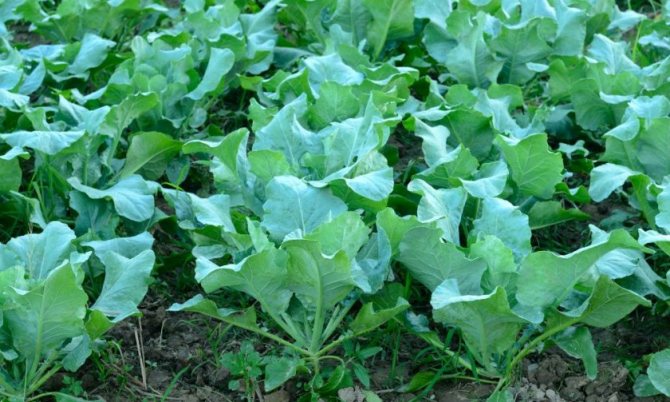

Organic dressings have a good effect on the composition of the soil: they saturate with micro- and macroelements, humus, which are simply necessary for cabbage. If the soil was not fertilized in the fall, top dressing can be done in the spring, 2 weeks after the cabbage was transferred to a permanent place. For this, manure is diluted in water (1: 5).
If the mullein was introduced in the fall, the first feeding is carried out 14 days after planting. But for this, nitrogen fertilizers (urea, ammonium nitrate) are used.
The second feeding is performed before the formation of ovaries, when 8-9 leaves have formed on the plant. Then 40 g of ash are added to the solution with manure (per bucket of solution).
2 weeks after the second top dressing, the soil is watered again. To do this, take a slurry or a mixture of mullein (0.5 kg per bucket of water).
Fertilizing the soil with herbal infusions
Nettle-based tincture is popular among gardeners. This plant is rich in various trace elements and vitamins that will benefit cabbage. The nettle is cut off, placed in a container, poured with plain water and left in the open sun to ferment. 1/2 cup of the fermented mixture is dissolved in a bucket of water and poured over the cabbage with this composition.
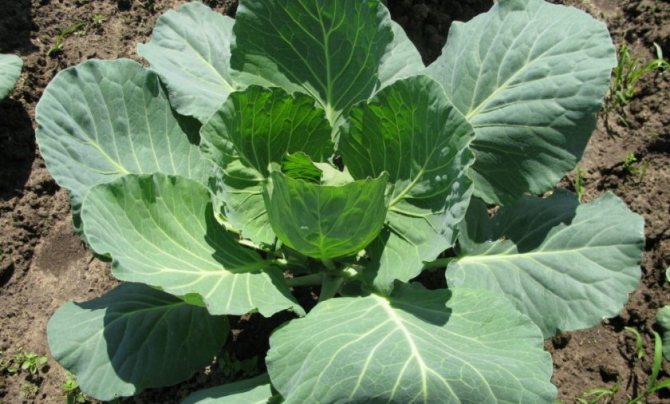

Yeast feeding
Heads of cabbage develop well if the plantings are treated with a fermented yeast solution. Dissolve 100 g of yeast in a bucket of warm water, throw in a spoonful of sugar and leave to ferment. A glass of the finished solution is diluted in a bucket of water and used as a top dressing.
We solve the problem
But first, some valuable advice! In the cultivation of collard greens, a seedless method is used. After sowing directly into open ground, the plant grows powerful roots, which penetrate deep into the ground. Due to this, it becomes strong, maximally resistant to heat, drought, diseases, pests. At the same time, the growing season becomes shorter, and the crop is harvested three weeks earlier.
According to this technique, sowing is carried out from early April to early June. At the initial stage of the development of a seedless culture, it is necessary to carry out measures against slugs, cruciferous fleas. To do this, mix dust from tobacco, wood ash and dust young sprouts with this powder. Such plantings are regularly (every ten days) watered and loosened.
For effective growth of the rosette, the culture is fed with a nitrogen solution. The suggested dose is ten grams of ammonium nitrate per ten liters of water. For the formation of a head of cabbage - potassium nitrate.
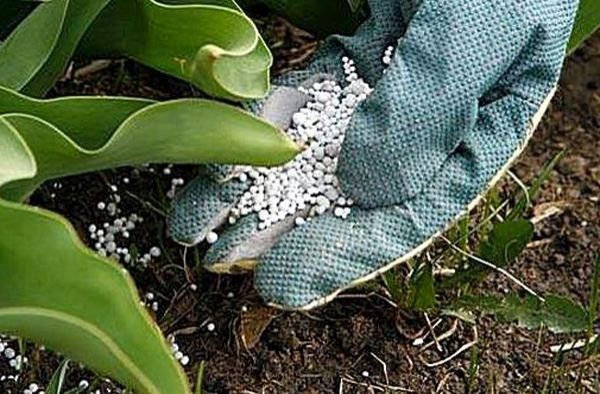

According to signs, heads of cabbage should form when the day becomes shorter.
All nutrients are laid by the cabbage itself in the covering leaves, like in a pantry. The ovary should appear with seven or nine such leaves, but due to inexperience, people remove them, that is, they disrupt the process, and the plant again seeks to grow them. As a result, there is a battle of "who will win" and the ovary cannot be expected. Cabbage shows this with yellowing leaves, which she then sheds herself.
We return to solving the problem. If the reasons are found and analyzed, they must be eliminated. Experienced gardeners know what to do in such cases and offer their recommendations:
- Choose only high quality seeds
... Bad ones are obtained from crossing a seed plant with relatives in the family. As a result, a hybrid appears, outwardly identical to cabbage, which will not give an ovary, but will simply grow in the garden with an ordinary green mass. Do not forget that a beautiful picture on imported packaging is not a guarantee of a quality product. Seeds are best purchased from well-known producers, agricultural firms, specialized outlets and time-tested sellers.
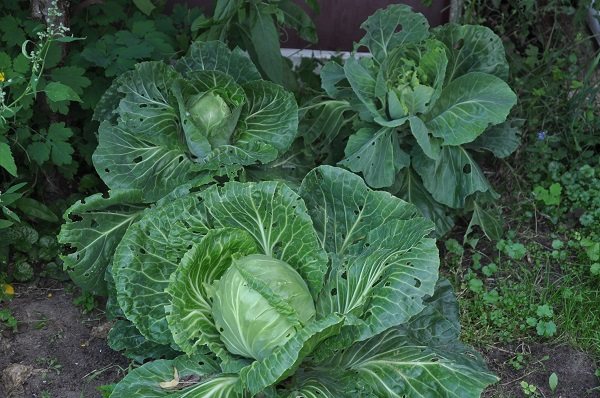

- In the fall, all weeds and remnants of previous crops should be removed from the area allocated for cabbage. Its digging is carried out to a depth of twenty-five centimeters. At the same time, it is convenient to apply organic fertilizers.
- Do not forget about the observance of crop rotation, about the predecessors, the best of which are cucumbers, legumes, onions, potatoes, eggplants, carrots. Cabbage can be returned to its old place only after three years, because it strongly draws out all the nutrients from the soil.
- The optimum level of soil acidity should not exceed 6 PH. If, nevertheless, the soil is acidic, its liming is carried out, calcium nitrate is introduced
- An experienced gardener should know that cabbage loves free space, a long day and a lot of sunlight, in which it gets tied. At the beginning of the season, it is necessary to calculate the crop planting scheme so that tall corn, sunflower, closely growing shrubs or trees are not nearby.
- a dense planting must be thinned so that the bushes do not spend all their strength on pulling towards the light
- regular and timely loosening perfectly helps the formation of the ovary. For late-ripening varieties, hilling is mandatory, which contributes to an increase in roots and an influx of usefulness from the soil, forming a head of cabbage. It must be carried out at least three times. First twenty days after planting, then every ten days. The height of the mound must be at least eight centimeters
- when the lower leaves break off, the crop is severely stressed. The cabbage leaf retains moisture, it also feeds the whole plant with other microelements, so the more leaves, the higher the guarantee of the appearance of the ovary.
- will give an impetus to the formation of heads of cabbage, perfectly saturate the earth with substances useful for vegetables, the use of special preparations, for example, "Ovyaz". Will have a positive effect on the condition of the Mikras plant. They include trace elements, stimulants to accelerate metabolic processes, resistance, increase the resistance of vegetables to an unfavorable environment.
- experienced gardeners recommend an excellent method for a hot summer - tying the leaves in the form of a bud, which will retain the nutritious moisture along the ovary
- in the heat, cabbage needs a lot of moisture. The ideal option is sprinkling, as well as abundant watering between rows. For this, grooves are made in them, which are well filled with water. Such irrigation is carried out only in the evening, moisture should be absorbed into the ground, and not evaporate and it is advisable not to overdo it. Since September, watering is significantly reduced if the cabbage is intended for long-term storage.
- fertilizers - they are applied only dissolved in water, proportions, instructions must be observed, since oversaturation will give abundant growth of tops
Experts offer different options on how to feed cabbage so that heads of cabbage are tied. Everyone has the right to choose the most suitable one for himself. All components are taken per ten-liter bucket of water:
- bird droppings, mullein - 0.5 liters each. bank. Azofoski - thirty grams, fertilizer in the complex - Zdraven-Turbo, Zircon, Orton, Crystalon, Solution, Kemira-Lux reduced by half
- nitrophoska (NPK-complex) - fifty grams
- 0.5l. a can of bird droppings and a 1 liter can of infused ash from firewood. To do this, take one glass, pour boiling water (1 liter), close it well and filter after a week
- an infusion of bird droppings and cow dung can be prepared in the same way as from wood ash. For the working fluid, take one liter of manure infusion and seven hundred grams of chicken
The gardener should pour the prepared solution under each bush at least one and a half liters. For row spacing of one square meter, up to eight liters are required. If the summer is rainy, the weather is damp, such fertilizer rates can be poured at the root.
Any dressings are made only dissolved in water, it is also necessary to observe the proportions, instructions, since oversaturation with such food will give an abundant growth of tops.
We remember that late varieties like loamy soils, in which mineral and organic-mineral fertilizers have been introduced. An increase in the rate of mineral fertilizers has a great effect on hybrid cabbage varieties F, they perceive them better than traditional ones.
It is very important to know that individual nutrients are consumed unevenly during the growing season of a vegetable. The plant itself takes what it needs at this stage. Nitrogen is actively used at the beginning, phosphorus and potassium - during the formation of the rosette. This statement is the answer to the question - how to water the cabbage so that the heads of cabbage are tied.
What to do to get juicy heads of cabbage
If the cabbage does not form forks, different methods of seed preparation and hardening are used, and proper attention is organized during the growing season.
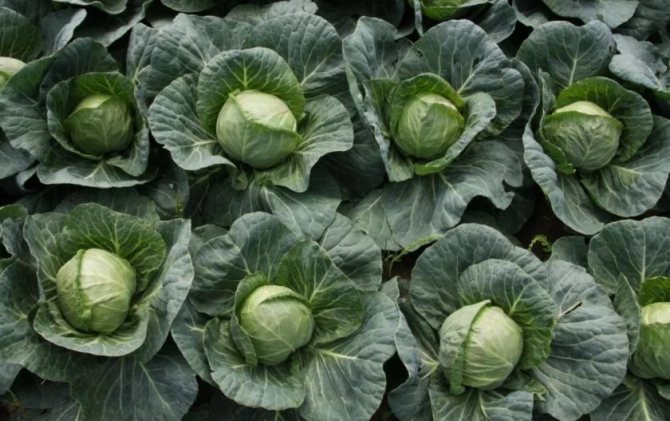

Seed and plot preparation for planting
The main reason why ovaries do not appear is the soil. The land is often depleted and deficient in minerals.
Here's what you need to do to increase the fertility of the soil (calculation per 1 sq. M):
- make a glass of wood ash;
- add 50 g of potassium sulfate;
- add 70 g of phosphorus fertilizer.
In the fall, the plot is dug up, adding rotted manure, and in the spring the soil is only leveled with a rake. In order for the seedlings to get into the fertile layer and take root well, they are planted "under the hoe." The selected location should not be in the shade.
When choosing seeds, don't be tempted by bright, promising packaging. The seeds may be of good quality, but not at all suitable for the climatic conditions. The variety can react negatively to extreme conditions, including not forming forks.
If the variety is selected correctly, then planting dates should be observed. Before planting, the material is treated with potassium permanganate in order to exclude infection of the future plant with diseases.
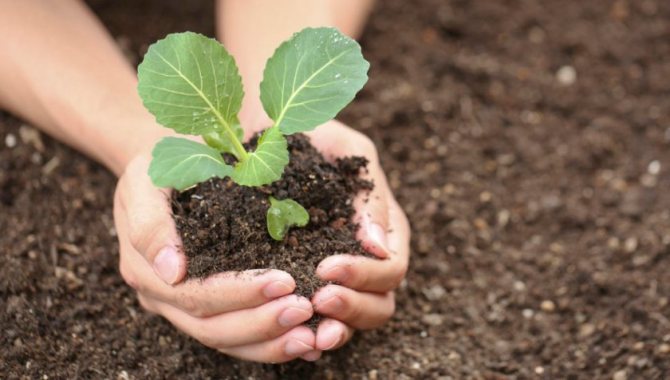

Landing terms and rules
If the seedlings are planted at the wrong time and in the shade, then they grow up, and the head of cabbage is not formed, therefore the timing in this matter is important.
Early varieties are sown no later than March, then in June you can harvest. Mid-season varieties should be planted at the end of April, and late varieties at the beginning.
Seedlings of early varieties are transferred to a permanent place in mid-May, the rest - on June 1-10. The distance between the bushes also plays a role. For early varieties it is 40-50 cm, for late varieties - 60-70 cm. The seedlings are buried to the cotyledons.
To set the leaves, add to the hole:
- humus - 500 g;
- ammonium nitrate - 3 g;
- superphosphate - 7 g;
- potassium salt - 3 g.
It's also a good idea to add river sand to the holes. The seedlings that died in the first 7 days are replaced with new ones.
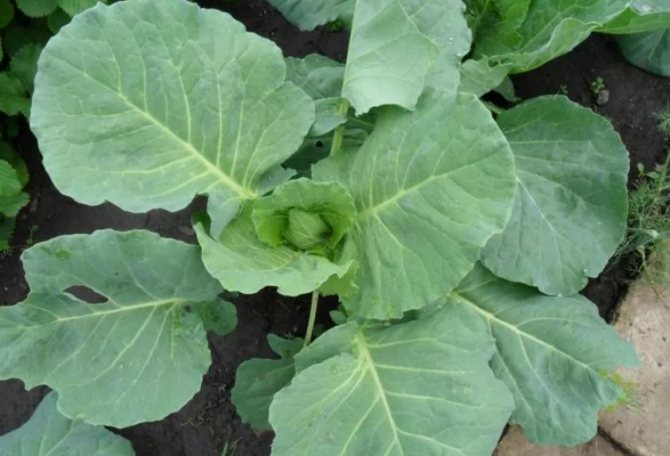

Top dressing of cabbage for the formation of heads of cabbage
The second feeding is carried out 12-14 days after the first. This procedure is especially important for cabbage varieties with early ripening periods. The watering rate is doubled - 1 liter of solution per plant.
Around July, cabbage begins to tie heads of cabbage. The stage is important, especially for the set of vegetative mass of the plant. It is worth helping to build up the mass especially after the ovary of heads of cabbage. Otherwise, the sheets will disperse to the sides, not forming the desired "kolobok".
Applying nitrogen-containing substances, you will improve the ovary of heads of cabbage. Nitrophoska or superphosphate will help the cause.
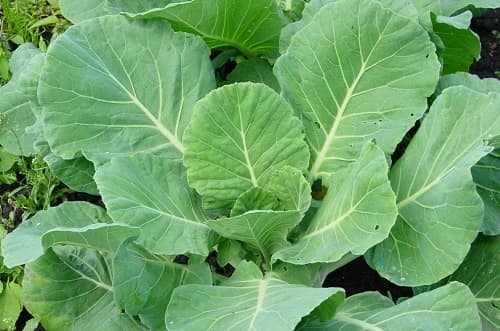

Dissolve a third of a glass of superphosphate in a compartment with a glass of ash in a bucket of water. Water a liter in each well.
Horse or cow manure will provide a complex of ammonia, phosphorus and nitrogen. Mix a glass of droppings with a bucket of water. Water only the soil near the plants. Contact with cabbage can cause burns.
A solution of 12-15 grams of urea in ten liters of water, divide 2/3 liters per well. After watering, be sure to huddle the cabbage.
When the seedlings have gained strength, and a sufficient number of powerful, intensely colored leaves have grown on the cabbage, it is time for the plant to start forming a head of cabbage. How many times do you need to water the garden bed with fertilizers to get a tight head?
- 15 days after feeding with urea, carry out the second, organic, and in between, pour 1 tbsp under each bush. l ash.
- To set a head of cabbage and get an excellent harvest, the "Ovary" product has been developed.
- Immediately after disembarkation, the seedlings need nitrogen, and in July and August, to set the head, phosphorus and potassium. Keitra Combi is an ideal source of fertilizers.
How many times should cabbage need to be fed if it does not tie well? Subject to all the requirements of agricultural technology, at least 4-5 times per season. Mineral fertilizers should be alternated with organic matter.
Prevention methods
Diseases and pests are fatal to forks. They simply do not allow the heads of cabbage to grow.
But competent preventive measures will help save the plant and get a good harvest:
- Insecticides... Scared away from the cabbage of the main enemy - the cabbage fly. Experienced gardeners are advised to spread tobacco dust mixed with ash and sawdust on the beds.
- "Actellik"... Timely treatment of a young plant with the drug will protect the cabbage from the scoop butterfly. For adult plants, when the head of cabbage has already set, the gluttonous pest is not terrible. This drug will help from cabbage moth.
- Hot pepper decoction... Serves as an excellent prophylactic agent against various viruses and bacteria.
- Horsetail and marigolds... The proximity of these plants will help protect cabbage from fungal diseases.
It is also important to timely identify and prevent the main diseases of cabbage, which can destroy the crop.
The most common diseases and preventive measures:
- White rot... Observe the rules of crop rotation, harvest the crop in a timely manner, and avoid injuring the forks.
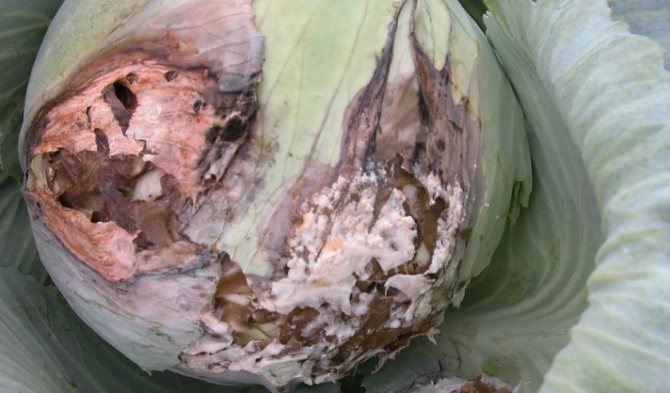

Gray rot... Adhere to the rules of crop rotation, apply nitrogen fertilizers in moderation, and harvest the tops on time.
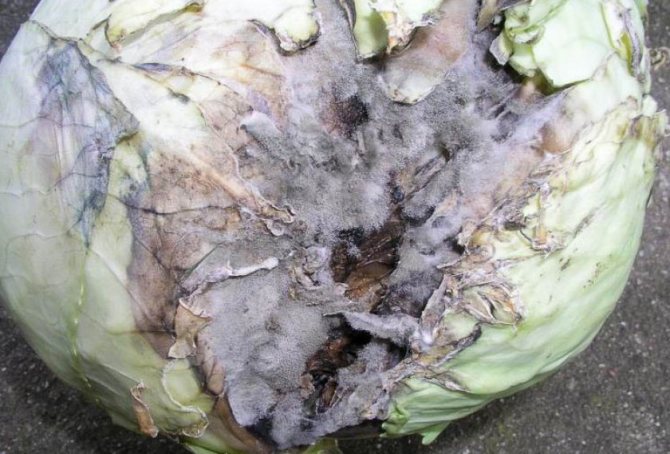

Keela... The main enemy of cabbage. It is impossible to cure the disease. The risk of injury can be reduced by cultivating the soil with cumulus, and in greenhouse conditions, heat treatment of the soil.
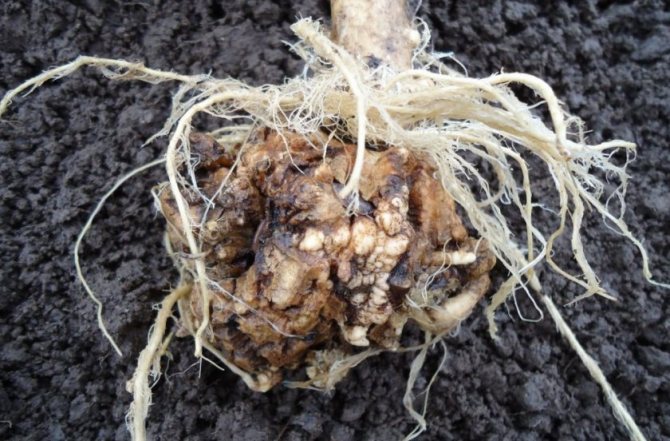

Fusarium wilting... It is recommended as a preventive measure to treat the ground with a solution of copper sulfate (5 g per bucket of water).
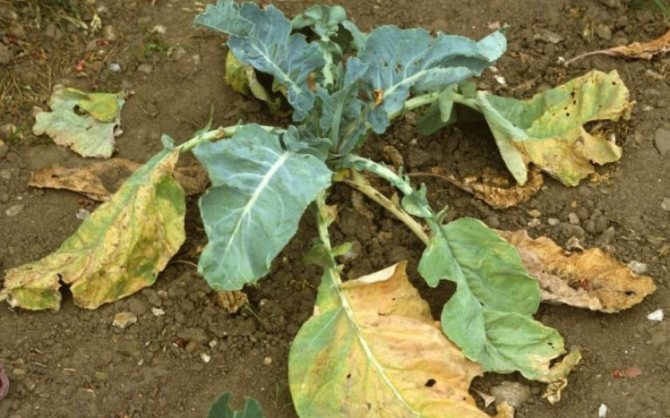

Mosaic... Fighting is useless. Weeds should be carefully weeded and the plantings treated with insecticides.
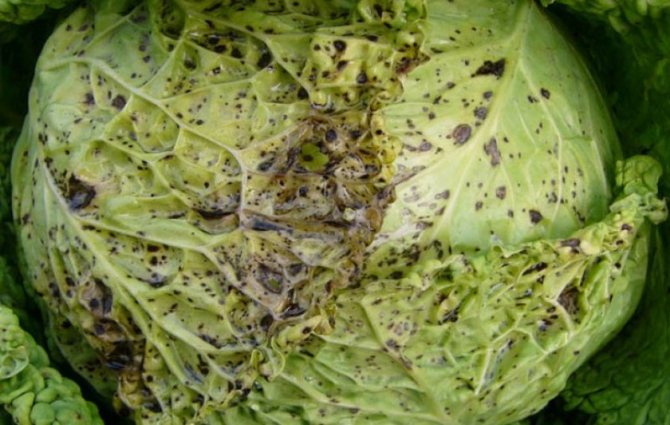

Peronosporosis.... By maintaining a culture-friendly environment, fungal infestation is minimized.
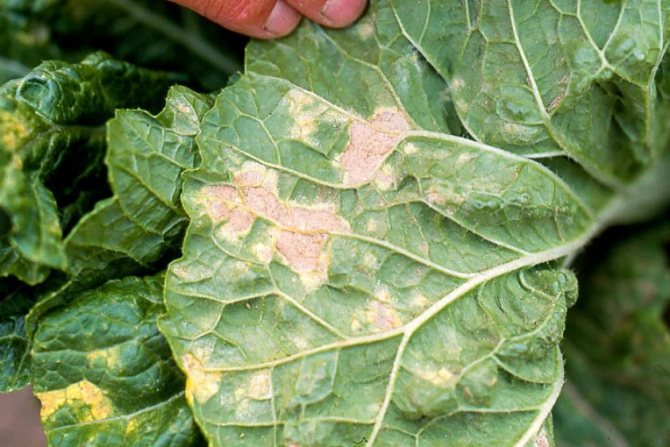

Blackleg... Seedlings are treated with biological products (Planriz, Baktofit, Fitosporin, Fitolavin-300).
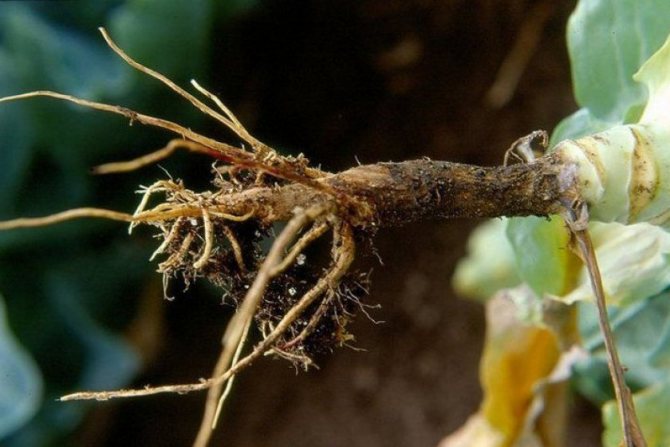

Tying heads of cabbage is a difficult process that depends on both the quality of the seeds and the growing conditions of the vegetable. Even elementary care errors can cause cabbage to fail. Do not forget about feeding, watering and preventive measures, and tasty, juicy forks will certainly ripen in your garden.
Pests and diseases
If the cabbage is affected by pests or diseases, the formation of forks is at risk. To cope with the problem, you will have to use chemicals, but sometimes you can use folk remedies.
The following insects often attack cabbage:
- aphid;
- cruciferous bugs and fleas;
- stem hidden proboscis;
- cabbage moth;
- rape sawfly larvae;
- slugs;
- caterpillars of a cabbage butterfly.
The greatest damage to the plant is caused by diseases:
- blackleg;
- downy mildew;
- keel of cabbage;
- black spot;
- white, gray, black and dry rot;
- vascular bacteriosis;
- fusarium.
The abundance of harmful organisms and insects should not be scary. If you carry out important preventive measures, then the planting will be able to protect:
- Before sowing, the seeds are placed in water heated to 50 ° C for 20 minutes, then they are cooled by immersing them in a cold liquid. It is also useful to soak them in a growth promoter.
- Once every two weeks, the sprouts are watered with a weak solution of potassium manganese.
- The bed is thinned out, removing frail and diseased seedlings.
- If a cabbage fly is operating on the site, then after planting the plants in the ground, the bed is treated with Bazudin. In the calculation of 30 g of the drug per 30 square meters of soil
- Spraying with insecticides helps well against pests.
- It is necessary to cover the ground around the Cruciferous with sawdust, then the insects will not be able to get to the roots.
- Cruciferous fleas are afraid of wood ash.
- Diseased foliage is removed and burned.
- Spraying with a 0.5% solution of copper sulfate relieves slugs.
The defeat of cabbage by diseases and pests is always interconnected. Therefore, prevention and control of some, reduces the likelihood of others.
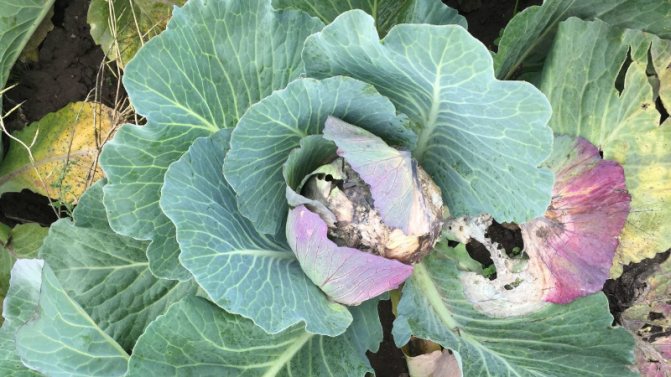

Poor quality planting material
White cabbage very often does not lay heads of cabbage due to the fact that the seeds from which the plants were obtained turned out to be of low quality. Also, the problem appears in the case of buying bad seedlings.Because of this, the quality of the planting material must be assessed even before it is planted in the beds.
The fact that the seeds are bad is evidenced by their low germination capacity. In this case, even if the seedlings obtained from them have an attractive appearance, this will not mean that the harvest will be good. Having received rare seedlings, it is necessary to reseed the cabbage by purchasing seeds from another manufacturer.
When you buy ready-made cabbage seedlings, you need to choose only strong plants that are not stretched out and have a healthy green color. Their leaves should be of normal density. The soil in pots with seedlings should not be overdried.
Video text
Today we will talk about why cabbage heads are not tied. There are several reasons, among them the unsuitable variety of cabbage, insufficient feeding of plants with calcium, unsuitable acidity of the soil. Let's see why growing cabbage often causes a number of problems. And also how to correctly change the acidity of the soil with the help of chalk and other calcium-containing substances.
******** SUPER WAY TO POISON THE GARDEN WITH SODA!
Many inexperienced gardeners are looking for answers to their questions on the Internet. Unfortunately, in the pursuit of views and money, many bloggers come up with many tips that are not only not useful, but are categorically harmful to the garden. ******** HOW TO PREPARE TRICHODERMIN
Today we will consider how to make such a popular biological drug as Trichodermin at home. It is based on spores or mycelium of the fungus Trichoderma lignorum, which suppresses pathogenic microorganisms. See our video for all the cooking details.
******** HARMFUL TIPS FROM POPULAR BLOGGERS
Every gardener appreciates his time and effort. When he is looking for how to grow plants in his garden or in the country, he entrusts the fate of his garden to gardener bloggers. Therefore, today our video is devoted to assessing the quality of recommendations of popular video bloggers.
******** BORIC ACID FOR PLANT FEEDING
Boric acid is often used to feed plants, so today we will talk about boric fertilizing. Boron deficiency affects the appearance of the plant. Tomatoes and apple trees are especially sensitive to the lack of these elements. ******** SUCCINIC ACID. PREPARING A FORCED SOLUTION.
Today we will talk about the use of succinic acid in the garden and vegetable garden. Succinic acid is a universal source of energy. We recommend you a method that significantly increases the effectiveness of succinic acid.
******** HOW TO REMOVE ANTS IN THE GARDEN?
We offer you a non-chemical method of ant control, which is suitable for organic farming, based on a biological product containing bacteria bacillus thuringiensis. These drugs are also effective against scoops, moths, aphids, and many other pests.
******** Soil for planting seeds - we get rid of harmful microorganisms!
In order to plant seeds and get a good harvest, it is important to properly prepare the soil for seedlings. In this video, we will look at several ways to disinfect the soil and find out the most effective option!
******** Preparing seeds for planting - dressing. Disinfection.
Why it is important to properly prepare the seeds for planting - the results of an experiment on seed dressing in fourteen different ways.
******** How to increase seed germination
Today we will tell you about the promised way to stimulate the growth of seedlings. It can also be used to improve the efficiency of irradiation. Indeed, among the large number of methods for pre-sowing seed treatment, it is better to focus on those that have a scientifically grounded basis.
******** HOW TO CHOOSE THE RIGHT FERTILIZER?
Today we will talk with you about fertilizers. If you go to a store, the fertilizer offer is always very wide. And even an experienced gardener can be confused about which fertilizer is best to use.
******** Greenhouse with automatic irrigation for growing seedlings.
Today we will talk about a very simple design that everyone at home can use at home to grow seedlings or a mini-vegetable garden on the windowsill.
Incorrect planting dates
A mistake in planting time can completely destroy the crop. Early varieties must be planted strictly before March 10, otherwise there is a very high risk that, even with proper care, the ovary will not form. Mid-ripening and late-ripening varieties should be sown between March 25 and April 25.
Also, a gardener can use this rule when planting cabbage for seedlings - the seeds must be sown no later than 60 and no earlier than 65 days before the seedlings are planted in a permanent place.
It is no longer possible to correct the situation if the cabbage planting time is wrong. Forcing the plant to lay the forks will not work, and the yield will be minimal.
Bad landing
Cabbage belongs to garden crops that are demanding in terms of where it is planted. Because of this, if the wrong plot is chosen for the garden, the crop may not be obtained. The plant should not be planted in the shade, in drafts and completely unventilated areas. The soil is needed loamy, light.
Also, when choosing a place for planting, it is necessary to observe the crop rotation. It is best to plant cabbage after such crops:
If the seedlings are already growing in an unsuccessful area and it is too late to replant them, then it is worth trying to correct the situation with top dressing. They are applied regularly during watering. Good results are obtained by using mineral formulations. The main thing is not to overfeed the plant.
The reasons for this undesirable phenomenon
Among them are the most common:
- purchase of low-quality seed material in questionable, non-specialized places. Imported seeds that are not adapted to our climate, or even fake
- poor seedlings - sluggish, painful cuttings will not be able to produce a good harvest
- dense planting does not receive vital lighting
- the wrong choice and poor preparation of the site, an increased level of soil acidity, which also plays an important role
- unwanted neighbors - tall crops that shade the plant
- insufficient watering during the period of setting leaves, forming rosettes, it should be intense, especially in dry weather
- one of the main indicators why cabbage does not tie a head of cabbage is the lack of an optimal temperature regime, and this is seventeen to twenty degrees of heat. Cabbage belongs to the family of cold-resistant plants, therefore, at high temperatures, their development stops, and the appearance of the ovary is inhibited. If the atmosphere is hot, moisture leaves the heads of cabbage for cooling and survival. In this case, the process of the ovary may be absent, stop, and if it does appear, then it will be deformed in the future.
- removal of the lower leaves negatively affects the further development of the bush, they also play an important role in the life of the culture
- Irregular top dressing of the soil under the bush and even more the introduction of the preparations in a dry form, and the "starvation" of the vegetable negatively affects the yield
Irrigation failure
Improper watering - too little or, conversely, abundant - leads to the fact that the ovary is not laid. When there is little rain, and watering is not carried out, and the soil dries out a lot, the cabbage weakens and cannot lay the head of cabbage. At the same time, if there is too much water in the soil, then the plant also does not tie the forks. Because of this, it is very difficult to grow a crop in areas with a close occurrence of groundwater.
Normally, you need to water the plants 2 times a week, and if it is dry, dry weather, then 3-4 times. It is especially important that the vegetable receives a sufficient amount of water precisely during the period of laying the ovary.
Density of plantings
When growing cabbage outdoors, you need to keep the distance between the plants.If the variety is early ripening, they are planted according to the scheme 40 by 40 cm, and if it is late ripening - 70 by 70 cm.Too tight planting leads to the fact that the plants begin to shade each other and, as a result, stretch out to the light, thin, become smaller and do not set the ovaries.
If you want to save space on the site, then you can plant greens or bush beans with cabbage. You cannot violate the landing pattern. If it has already been broken, then in order to obtain a harvest, it is necessary either to plant part of the bushes, or, if the cabbage has been growing for a long time, to cut off the excess plants.
Weather
The weather greatly influences the development of cabbage bushes. Overheating, as well as cold, leads to the fact that the culture does not tie heads of cabbage. Optimal for the growth of cabbage are indicators from +15 to +25 degrees. If it gets hotter, the plant will stop developing, as in the cold. To save the harvest when the temperature drops below +10 degrees, the bed should be covered with foil. In the heat, you need to place containers with water next to the cabbage to increase the humidity of the air. In intense heat, it is useful to water the plants in the evening with cool water, but not ice. A small water spray, which is installed on the garden bed and turned on in the evening, when the sun no longer falls on the plants, will also help. After normalizing the weather, it is useful to feed the plants with nettle slurry.
Acidic soil
Acidic soil is not suitable for head ovary. On it, cabbage easily gets sick and cannot bear fruit normally. As a result, there is a deterioration in growth, shredding of leaves and the appearance of underdeveloped forks. The roots of a plant in acidic soil are deformed, which does not allow it to fully assimilate the substances necessary for development. This is especially noticeable in the middle of cabbage growth.
To reduce the acidity of the site, it must be processed before planting seedlings. For this purpose, lime is introduced into the soil in an amount of 300 g per 1 square meter. Also, to normalize the acid-base balance, you can add rotted horse manure to the soil - 7 kg per 1 square meter. It will also be a plant food.
How to speed up the setting of a head of cabbage
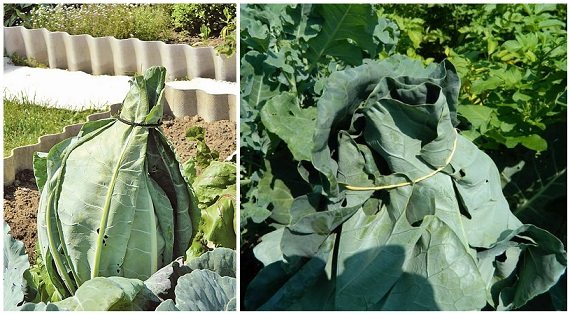

An old grandfather's trick aimed at speeding up the setting of a head of cabbage. When the cabbage plant grows at least 12 leaves, several rosette leaves are collected in a "bouquet" and tied into a bunch with a rag ribbon or soft elastic band. This operation encourages the plant to form forks more quickly. The method is troublesome and is not suitable for large cabbage plantations, but it is effective in a personal garden with several dozen plants.

